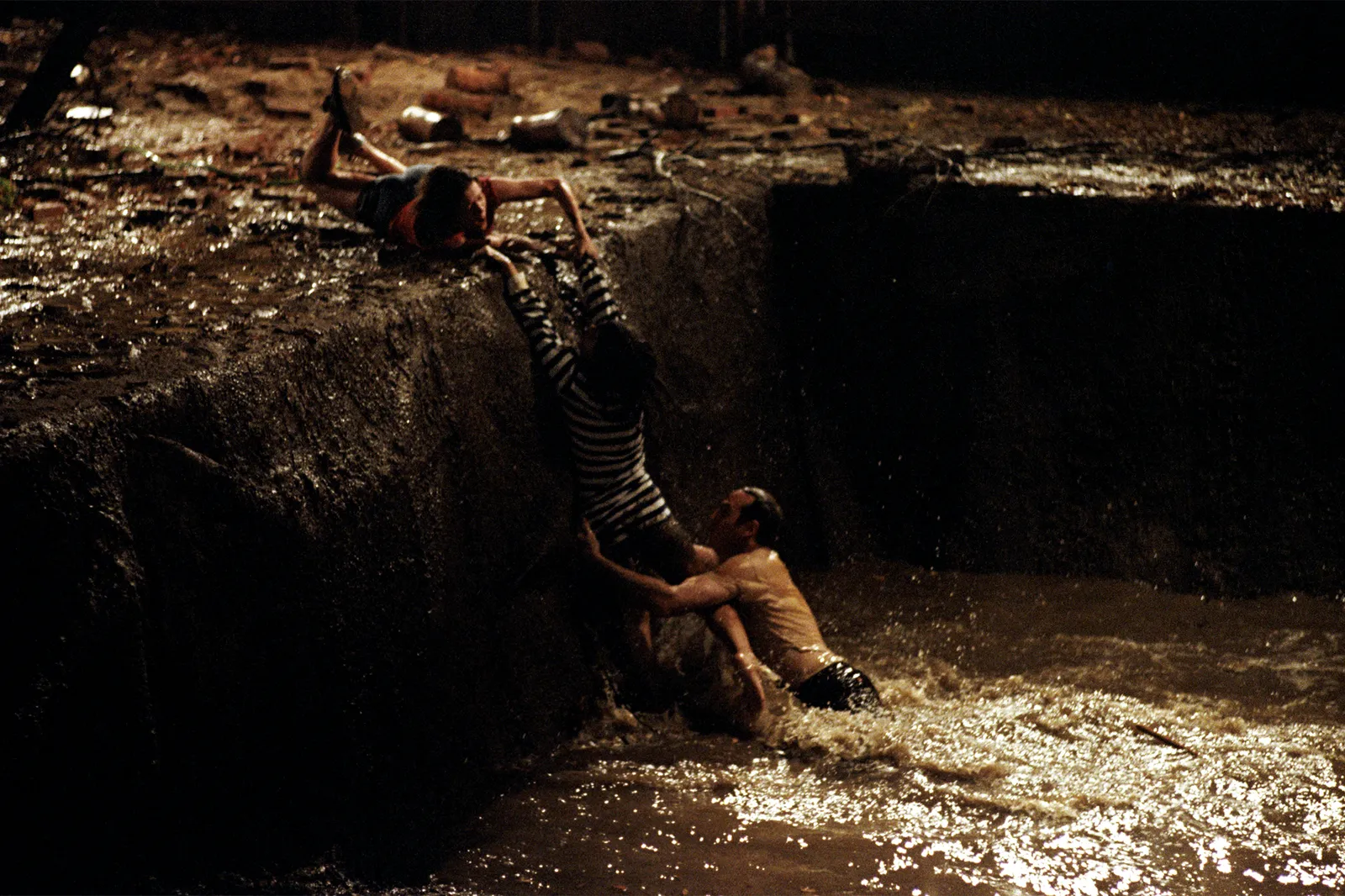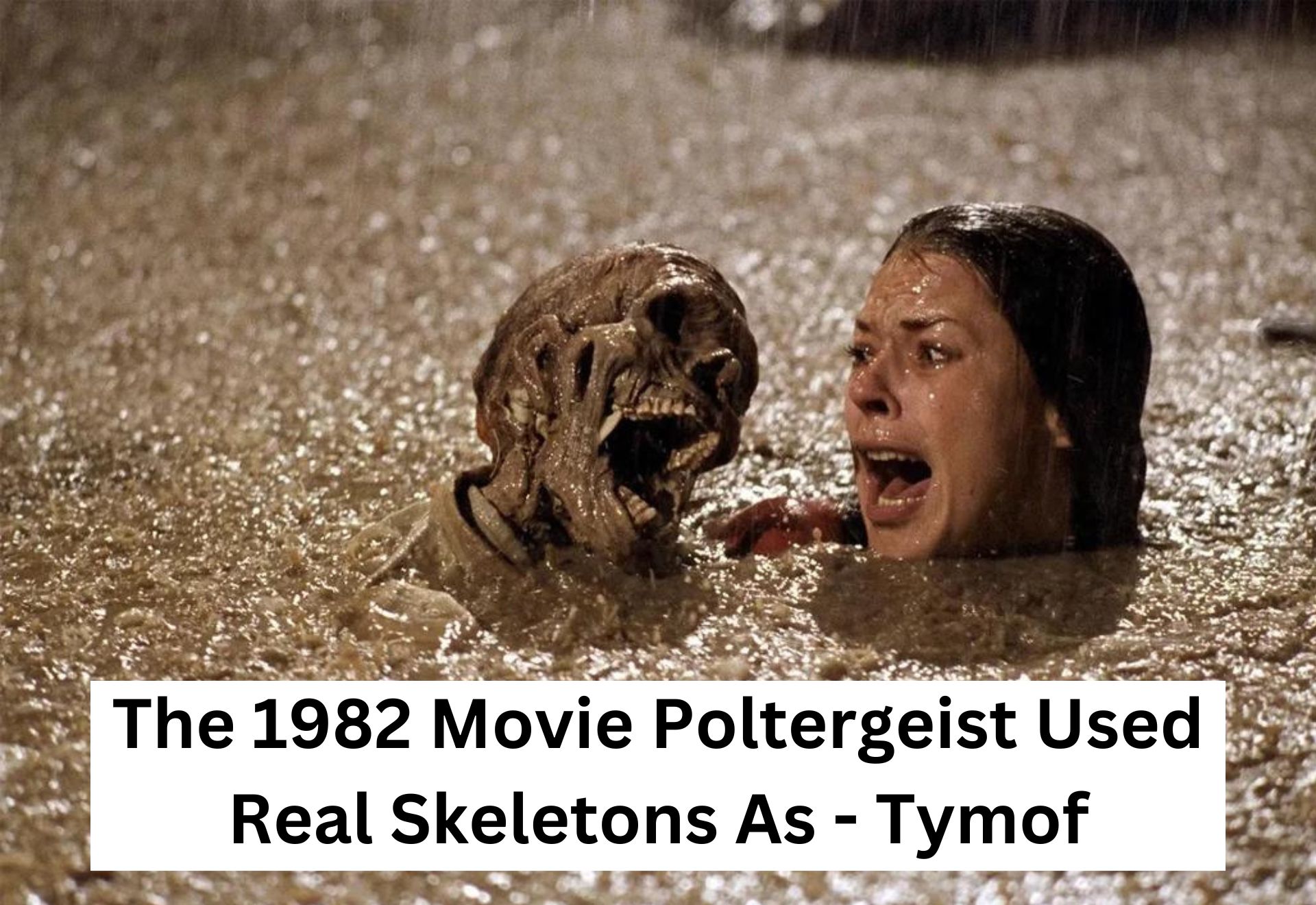The 1982 movie “Poltergeist” used real skeletons as props in its infamous swimming pool scene. This choice sparked controversy and urban legends.
“Poltergeist” is a landmark horror film directed by “Tobe Hooper“ and produced by “Steven Spielberg“. Known for its spine-chilling plot and groundbreaking special effects, the film has left an indelible mark on the horror genre.
The use of real skeletons in the movie’s climactic pool scene added to the eerie atmosphere and heightened the film’s sense of realism.
Poltergeist skeleton scene video
This decision led to numerous urban legends and speculations about a curse associated with the film. Despite the controversy, “Poltergeist” remains a classic, celebrated for its storytelling, performances, and innovative techniques that continue to influence horror cinema today.
The Making Of Poltergeist
The 1982 movie Poltergeist is a classic horror film. It is famous for using real skeletons during production. This decision led to many challenges and stories.
Production Challenges
Creating Poltergeist was not easy. The use of real skeletons made things difficult. The filmmakers faced many issues.
- Safety Concerns: Real skeletons posed health risks.
- Budget Constraints: Real skeletons were cheaper than fake ones.
- Superstitions: Many believed using real bones brought bad luck.
These challenges tested the team’s resolve. They pushed through to create a memorable film.
Cast And Crew
The cast and crew of Poltergeist were talented and brave. They worked hard to overcome the movie’s difficulties.
| Role | Name |
|---|---|
| Director | Tobe Hooper |
| Producer | Steven Spielberg |
| Lead Actress | JoBeth Williams |
| Lead Actor | Craig T. Nelson |
JoBeth Williams had to act in a pool with real skeletons. This was very scary for her. Craig T. Nelson also gave a strong performance. The director, Tobe Hooper, led the team with vision. Steven Spielberg’s production added magic to the film.
The Skeleton Controversy
The 1982 movie Poltergeist has a dark, eerie secret. Did the filmmakers use real skeletons? This controversy has intrigued fans for years. Let’s dive into the origins and first reports of this chilling rumor.
Origins Of The Rumor
It all started on the set of Poltergeist. The movie’s water pool scene showed skeletons rising from the muddy water. The rumor began when people claimed these were not props but real skeletons. The idea was both fascinating and horrifying.
Some crew members shared that using real skeletons was cheaper than making fake ones. This claim added fuel to the rumor. Fans and media began to speculate. The question remained: were they real?
First Reports
The first reports came from cast and crew members. JoBeth Williams, who played the mother, revealed shocking details. She stated that she was unaware of the real skeletons at first. Later, she learned that the skeletons in the water were indeed real.
Other crew members supported her statement. They claimed using real skeletons was a common practice in Hollywood at the time. These reports shocked many and intensified the debate.
| Source | Claim |
|---|---|
| JoBeth Williams | Real skeletons were used in the water pool scene. |
| Crew Members | Real skeletons were cheaper than fake ones. |
This eerie controversy continues to haunt fans. The use of real skeletons in Poltergeist remains a chilling mystery.
Real Skeletons On Set
Discover the shocking truth about the use of real skeletons in the making of the 1982 movie Poltergeist.
Why Real Bones?
- To add authenticity to the film’s eerie atmosphere.
- Cost-effective alternative to creating fake props.
- Director’s desire for realism in horror scenes.
Sources Of Skeletons
- Medical supply companies providing cadavers for research.
- Access to skeletons from universities and medical institutions.
- Legal acquisition of skeletal remains for artistic purposes.

Cast Reactions
The 1982 movie Poltergeist shocked audiences by using real skeletons in its scenes. Cast reactions were understandably intense and memorable.
Initial Shock
The cast of Poltergeist was shocked to learn that real skeletons were used during filming.
Long-term Impact
This revelation had a lasting impact on the cast members, affecting their feelings about the movie.
Director’s Perspective
The 1982 movie “Poltergeist” is famous for its haunting effects. But, did you know real skeletons were used during filming? This decision came from the director’s perspective. Let’s explore the thoughts of Tobe Hooper and Steven Spielberg.
Tobe Hooper’s Vision
Tobe Hooper directed “Poltergeist” with a clear vision. He wanted to create genuine horror. Using real skeletons added to the film’s realism. Hooper believed that authenticity could scare audiences more. The real skeletons made the scenes more intense.
Hooper’s choice was also practical. At the time, real skeletons were cheaper than fake ones. He made a bold decision to enhance the film’s impact. This decision became a controversial topic later.
Spielberg’s Role
Steven Spielberg was the producer of “Poltergeist.” He played a significant role in its creation. Spielberg supported Hooper’s vision. He believed in making the movie
Audience Response
The 1982 movie Poltergeist left a lasting impact on audiences. The use of real skeletons in some scenes caused a stir. Fans and critics had strong reactions. Let’s explore how the movie was received.
Box Office Success
The movie was a hit at the box office. It earned over $121 million worldwide. This was a huge amount in 1982. People flocked to theaters. The film became a must-see event.
| Box Office Earnings | Year |
|---|---|
| $121 million | 1982 |
Critical Reviews
Critics had mixed feelings about Poltergeist. Some praised the film’s suspense and effects. Others found the use of real skeletons disturbing.
- Positive Reviews: Many enjoyed the horror elements.
- Negative Reviews: Some felt the skeletons were too much.
Despite mixed reviews, the film gained a cult following. It remains a classic in the horror genre.
Ethical Implications
The 1982 movie Poltergeist is famous for its scary scenes. But, did you know the film used real skeletons? This decision raises many ethical implications. Here, we explore the moral questions and Hollywood practices related to this choice.
Moral Questions
Using real skeletons in movies raises serious moral questions. Is it respectful to the dead? Many believe that using human remains for entertainment is wrong. It can be seen as a lack of respect for human dignity.
People might ask, “Did the families know?” Often, the answer is no. These skeletons were usually unclaimed or from medical sources. The families of these people might not have been informed. This raises further ethical concerns.
Hollywood Practices
Hollywood has a long history of using real skeletons. Before special effects improved, real skeletons were common in movies. They were cheaper and more realistic than fake ones.
For the Poltergeist movie, real skeletons were used to save money. This practice shows how Hollywood prioritizes cost over ethics at times. Many argue that this approach needs to change. Modern technology now offers ethical alternatives.
| Aspect | Real Skeletons | Fake Skeletons |
|---|---|---|
| Cost | Lower | Higher |
| Realism | High | Varies |
| Ethical Concerns | High | Low |
- Real skeletons were cheaper in the 1980s.
- Special effects have improved since then.
- Using real skeletons raises ethical issues.
- Respect for the dead is essential.
- Families should be informed.
- Modern alternatives are available.

Credit: www.reddit.com
Legacy Of Poltergeist
The 1982 movie Poltergeist left a lasting legacy in horror cinema. The use of real skeletons during its filming became infamous. Its impact extends far beyond its release year.
Cultural Impact
Poltergeist brought horror into the mainstream. Many people were terrified by it. The film’s tagline, “They’re here,” became iconic. It remains a part of pop culture today.
- Haunted House Trope: Popularized the haunted house theme.
- Special Effects: Set new standards for visual effects in horror.
- Family Dynamics: Showed terror within the family unit.
Influence On Horror Films
Poltergeist influenced many horror films that followed. It inspired filmmakers to explore supernatural themes. Its success proved that horror could be both scary and commercially successful.
| Element | Impact |
|---|---|
| Realism | Use of real skeletons added authenticity. |
| Sound Design | Set a new benchmark for eerie soundtracks. |
| Special Effects | Innovative visual effects became a standard. |
Myths And Facts
The 1982 movie Poltergeist is a horror classic. Many stories surround the film, especially about the use of real skeletons. These myths and facts intrigue both fans and skeptics. Let’s explore the truth.
Separating Truth From Fiction
Many believe the film used real skeletons for its chilling scenes. This claim has sparked debate for decades. But what’s the truth?
According to crew members, real skeletons were indeed used. Special effects artist Craig Reardon confirmed this. Using real skeletons was common in the film industry. They were cheaper and more lifelike than plastic ones.
Popular Misconceptions
There are many popular misconceptions about the movie. Some believe the use of real skeletons cursed the film. This belief stems from tragic events involving the cast and crew.
- Dominique Dunne, who played Dana, was murdered shortly after the film’s release.
- Heather O’Rourke, who played Carol Anne, died at a young age.
These events fueled rumors of a curse. But experts argue that these are coincidences.
| Myth | Fact |
|---|---|
| The film is cursed. | No evidence supports a curse. |
| Real skeletons caused the curse. | Real skeletons were used, but curses are myths. |
The truth about Poltergeist is both fascinating and eerie. Understanding the myths and facts adds depth to the film’s legacy.

Conclusion
In light of the controversy surrounding the use of real skeletons in the 1982 movie Poltergeist, it serves as a reminder of the ethical considerations in the film industry. The revelation of such practices sparks discussions on the boundaries between art and morality, shaping the way we view cinema history.
